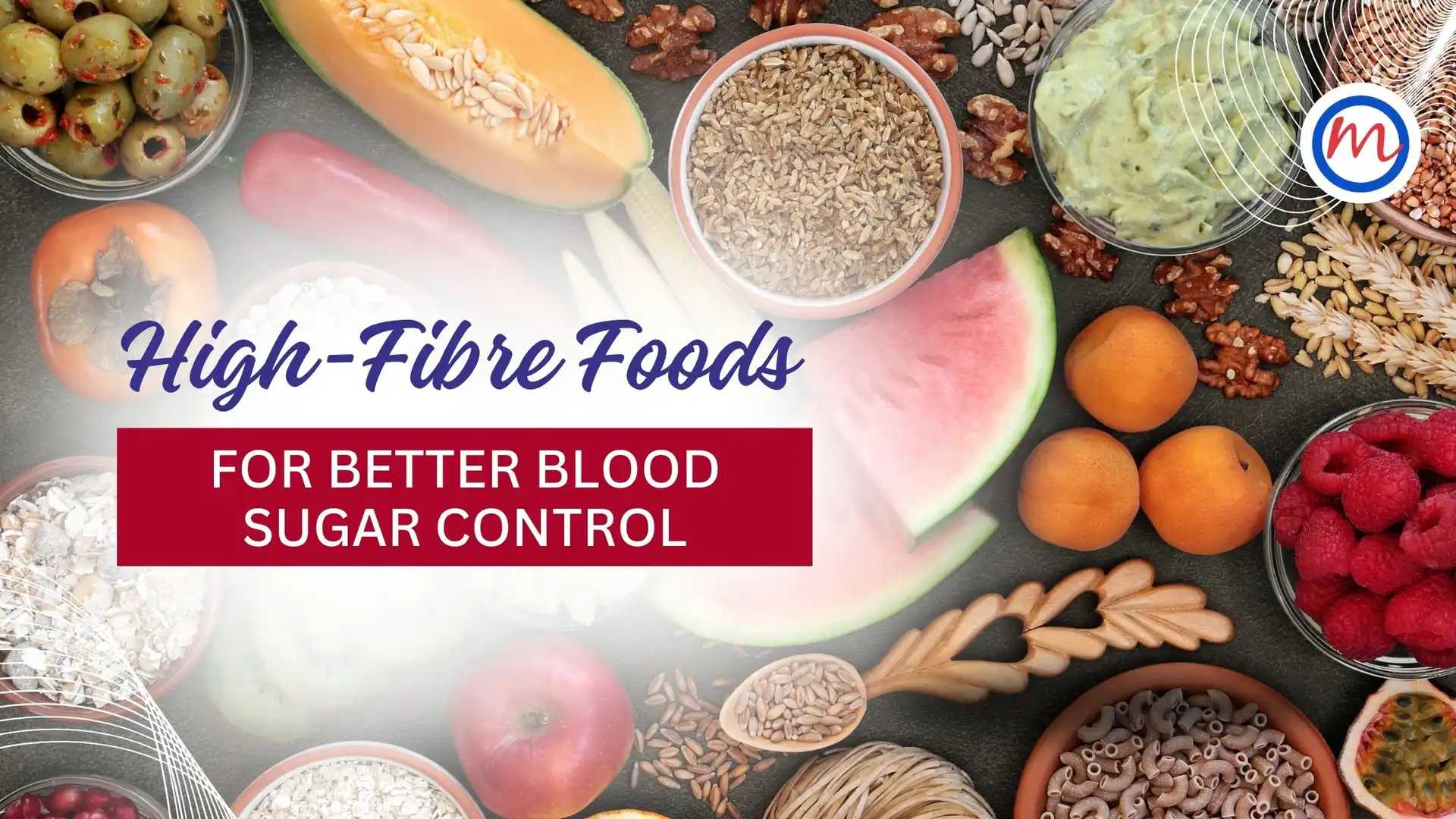Managing blood sugar levels is crucial for individuals with diabetes, prediabetes, or anyone looking to maintain overall health. High-fibre foods play a significant role in stabilizing blood sugar levels, improving digestion, and promoting a feeling of fullness, which helps in weight management. For those in India, incorporating locally available, fibre-rich foods into daily meals can make managing blood sugar levels both effective and enjoyable.
What is Dietary Fibre and Why is it Important?
Dietary fibre is a type of carbohydrate that the body cannot digest. It is classified into two types:
- Soluble Fibre: Dissolves in water to form a gel-like substance. It helps lower blood sugar levels and cholesterol.
- Insoluble Fibre: Promotes bowel regularity and prevents constipation.
Both types of fibre are essential for overall health, and their inclusion in the diet can help slow the absorption of sugar, thereby preventing sudden spikes in blood sugar levels.
Top Indian High-Fibre Foods
Here is a list of Indian foods rich in dietary fibre that you can incorporate into your diet:
-
Whole Grains
- Ragi (Finger Millet): Ragi is a powerhouse of dietary fibre and a traditional staple in many Indian households. Ragi porridge, dosa, or roti are excellent choices for breakfast or lunch.
- Jowar (Sorghum): A gluten-free grain, jowar is rich in fibre and can be used to make rotis, dosas, or khichdi.
- Bajra (Pearl Millet): Bajra is another high-fibre millet that aids in stabilizing blood sugar levels. Bajra roti paired with vegetables is a wholesome meal.
- Brown Rice: Unlike white rice, brown rice retains its bran layer, making it a fibre-rich alternative.
-
Legumes and Pulses
- Chickpeas (Chana): Both whole chickpeas and chana dal are fibre-rich. They can be added to curries, salads, or ground into flour for chilla.
- Lentils (Masoor Dal): A staple in Indian cuisine, lentils are not only protein-rich but also an excellent source of soluble fibre.
- Kidney Beans (Rajma): Popular in North Indian dishes, rajma is a high-fibre legume that pairs well with brown rice.
- Green Gram (Moong Dal): Moong dal in its whole form (sabut moong) is a fantastic option for soups or sprouted salads.
-
Fruits
- Guava (Amrud): Guava is one of the best high-fibre fruits available in India. Consuming it with the skin boosts fibre intake.
- Papaya: A digestive-friendly fruit, papaya is rich in fibre and aids in blood sugar control.
- Pomegranate (Anaar): Packed with antioxidants and fibre, pomegranate seeds make an excellent snack.
- Jamun (Indian Blackberry): Known for its anti-diabetic properties, jamun is also a good source of dietary fibre.
-
Vegetables
- Okra (Bhindi): Okra contains a type of soluble fibre that helps in stabilizing blood sugar levels. Stir-fried okra or okra curry are popular preparations.
- Bitter Gourd (Karela): Bitter gourd is well-known for its blood sugar-lowering properties and is rich in fibre.
- Spinach (Palak): A versatile leafy green, spinach is high in fibre and can be used in dals, curries, or soups.
- Drumstick (Moringa): Drumsticks are loaded with fibre and can be added to sambhar or stir-fries.
- Carrots (Gajar): Raw carrots make for a healthy snack, while cooked carrots can be added to curries and soups.
-
Nuts and Seeds
- Almonds (Badam): Almonds are rich in fibre and healthy fats. A handful of soaked almonds can be a great mid-morning snack.
- Flaxseeds (Alsi): Flaxseeds are packed with soluble fibre and omega-3 fatty acids. They can be sprinkled over salads or added to smoothies.
- Chia Seeds: Chia seeds are an excellent source of fibre. Soak them overnight and add them to your breakfast bowl or buttermilk.
- Sunflower Seeds: These seeds are a healthy addition to salads or snacks, providing a good dose of fibre.
-
Traditional Indian Snacks
- Roasted Chana: Roasted black gram is a high-fibre, low-calorie snack that’s readily available.
- Makhana (Fox Nuts): Makhana is a fibre-rich snack that can be lightly roasted with spices for flavor.
- Poha (Flattened Rice): When prepared with vegetables, poha becomes a balanced, fibre-rich meal.
- Sprouts: Sprouted moong, chana, or moth beans are nutrient-dense and high in fibre.
Tips to Increase Fibre Intake
- Start with Breakfast: Include fibre-rich foods like ragi, oats, or poha with vegetables in your morning meal.
- Add Vegetables to Every Meal: Incorporate fibre-rich vegetables like spinach, carrots, and okra into your daily meals.
- Choose Whole Grains: Opt for whole grains like brown rice, jowar, and bajra instead of refined grains.
- Snack Wisely: Replace fried snacks with roasted chana, makhana, or fresh fruits.
- Hydration is Key: Drink plenty of water when increasing your fibre intake to prevent bloating or constipation.
Incorporating high-fibre Indian foods into your daily diet can significantly improve blood sugar control and overall health. These foods are not only readily available but also versatile and delicious. By making mindful choices and balancing your meals with whole grains, legumes, vegetables, fruits, and nuts, you can enjoy the benefits of better blood sugar management while savouring the rich flavours of Indian cuisine. Remember to pair these dietary changes with regular physical activity and periodic blood sugar monitoring for optimal results.



